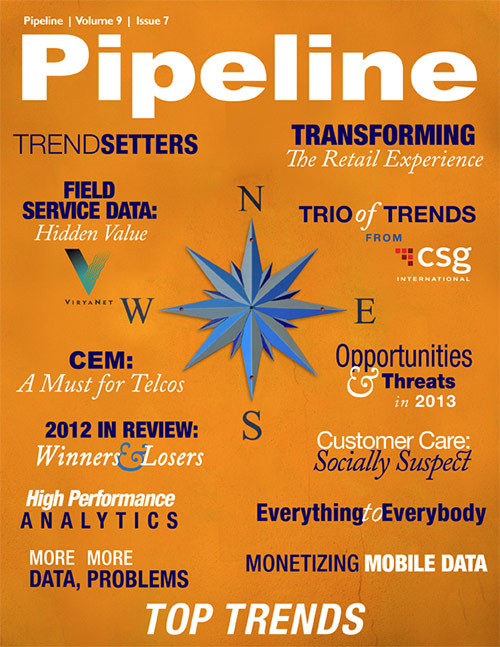Customer Care: Socially Suspect
Telstra’s social experiment
That last metric may have more to do with social media’s maturity than its potential or future capability. When Telstra decided in 2010 to embrace social media in an effort to bolster its weak customer-satisfaction ratings, CEO David Thodey said it may take as long as five years for the company’s internal culture to become customer focused and turn things around.
Good thing he gave himself some leeway. The company set a few goals, such as a 30 percent reduction year-over-year in the number of complaints lodged to the Telecommunications Industry Ombudsman (TIO), and a 6 percent increase in customer satisfaction. A year later, during the company’s investor call, Thodey reported that complaints were only reduced by 6 percent and customer satisfaction was only up 3 percent. The company nearly met its 75 percent first-time-resolution goal, missing it by only 1 percent.
Shortly thereafter, Telstra launched the Telstra 24x7 App on Facebook; now one year in, the company says it responded to 91.2 percent of Facebook requests within an hour of receiving them. It also launched Crowd Support, an online community forum where consumers and business customers can assist each other with information about Telstra’s products and services, share tips and experiences or discuss new and upcoming releases. Telstra is now boasting 200,000 hits per month on that site.
Thodey said in this year’s investor call that social media is becoming a very popular way to interact with customers, and that Facebook and live chat are really starting to change the dynamics of its customer support. The company now has 60 people monitoring social-media sites to proactively identify and respond to problems. The result is that TIO complaints are down 26 percent year-over-year and down 30 percent over the last three years.
“We are seeing significant changes in terms of how our customers are interacting with us,” Thodey said. “We’ve seen our consumer call volumes decline by 21 percent. We’ve never seen that sort of decline before, and that could only happen by delivering a better service.”
He tempered his enthusiasm, however, saying, “It’s been encouraging, but we still have a long way to go. I’m very clear that we’ve not delivered anywhere near where we’d like to be.”
While not referencing social media directly, the 2012 U.S. Wireless Customer Care Full-Service Performance Study by J.D. Power and Associates said 40 percent of full-service wireless customers used their carrier’s online chat function for customer service to solve problems, and that satisfaction for these customers is higher than for those who research information on their carrier’s website, communicate via email or access online user forums. Sixty-seven percent have used an account-management link on their smartphones or some other app to contact their provider. Overall satisfaction is 42 index points higher for these customers.





















